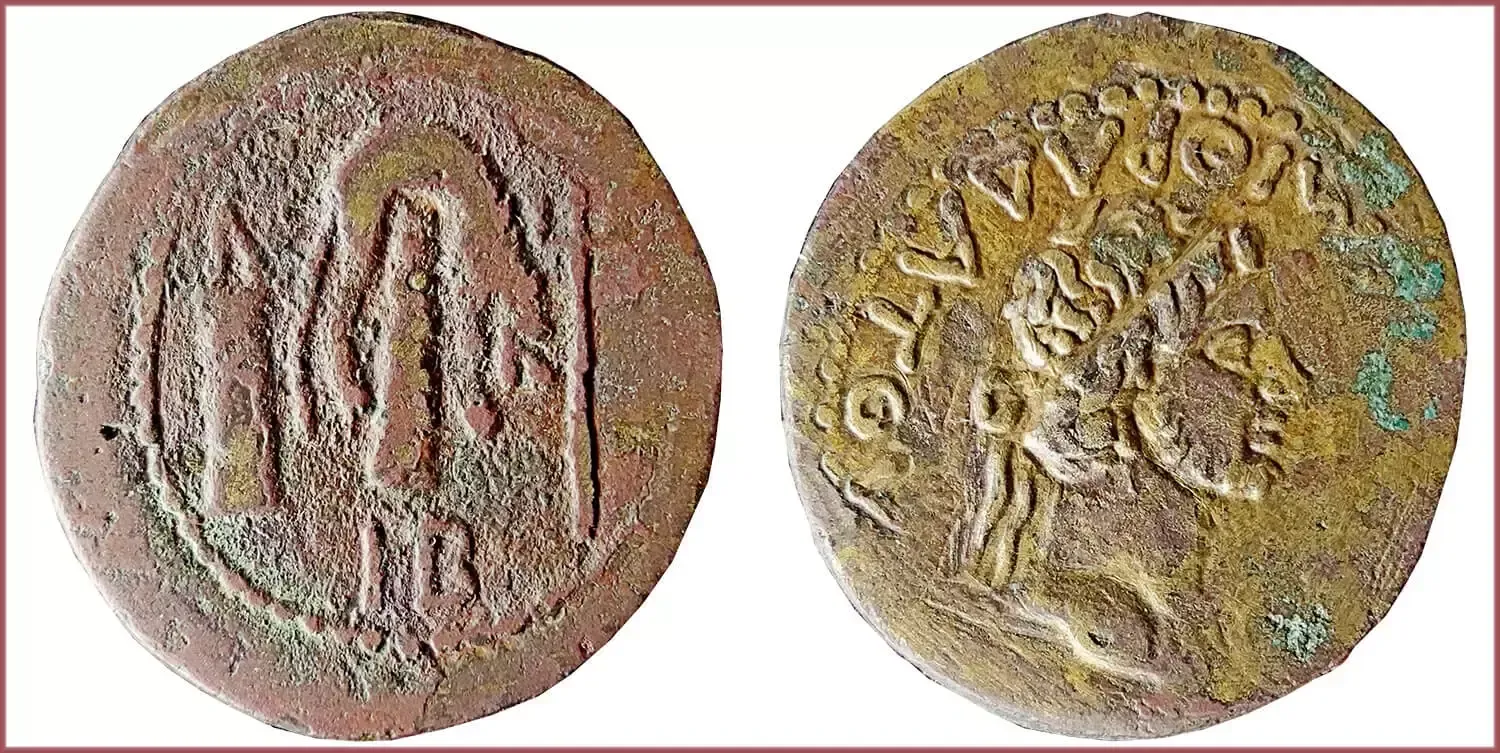ASSARION: COIN OF BOSPORUS
Assarion, 39-45 AD: Bosporan Kingdom
The Bosporan Kingdom (Kingdom of the Cimmerian Bosporus) — an ancient Greco-Scythian state located in eastern Crimea and the Taman Peninsula on the shores of the present-day Strait of Kerch. The 1st and 2nd centuries AD saw a period of a golden age of the Bosporan state. It was briefly incorporated as part of the Roman province of Moesia Inferior under Emperor Nero, before being restored as a Roman client kingdom. At the end of the 2nd century AD, King Sauromates II inflicted a critical defeat on the Scythians and included all the territories of the Crimean Peninsula in the structure of his state. The capital of the European part was Panticapaeum (modern city of Kerch in Crimea, Ukraine), and the Asian part was Phanagoria (modern village Sennoy, Russia).
Ruler: Tiberius Julius Mithridates Philogermanicus Philopatris (Mithridates III of the Bosporus; some sources mistakenly call this Bosporan king Mithridates VIII) — Roman client king of the Bosporus. Mithridates tried with all his might to make his country independent from the Roman Empire.
IB: designation of the denomination on the coins of the Bosporus kingdom (there is evidence that this is a numerical mark that indicated the denomination of the coin in 12 units [AE 12 units]; whatever, but in most numismatic catalogs this coin is still mentioned as a provincial assarion).
Lion's skin on a stick (mace); on the right — a trident; on the left — gorytos (leather bow-case for a short composite bow and arrows used by the Scythians in classical antiquity).
ΒΑΣΙΛΕΩΣ ΜΙΘΡΑΔΑΤΟΥ: king / ruler Mithridates (the same legend is found on a number of coins issued during the reigns of other kings with the same name, for example, Mithridates Eupator).
Portrait of Mithridates III.
On the obverse of the coin, there are clear traces of the remains of an unidentified coating (visually similar to gold, although it is not). There is also a version that it could be aurichalcum (Latin "golden copper") — a rare and valuable alloy of copper, zinc, nickel, lead and iron at the time, which visually resembled gold a little. Now we call this alloy brass.
- Copper: 26 mm - 10.96 g
- Reference price: 60$
COIN ASSARION — WHERE & WHEN (coins catalog: by names & emitents)
- ROMAN PROVINCES (Bosporus, Phrygia, Thracia, Nicaea, Marcianopolis, Antioch..., 1st-3rd centuries): assarion
- BYZANTINE EMPIRE (14th century): assarion = 1/2 trachy (aspron trachy nomisma)
- BULGARIAN EMPIRE (14th century): assarion
ASSARION as coin name.
Assarion (plural: assaria) — bronze coin of the period from the 1st to the 3rd centuries in a row. Assarion can be considered coin, equivalent to the Roman coin аs, issued on Greek lands that fell within the sphere of influence of the Roman Empire in the specified period. That is, assarion is a provincial as (conditionally).
In Ukrainian national museums and local coin collections, prevail the assaria of the Greek settlements of the Black Sea the period of dependence on Rome: Olbia, Panticapaeum, Chersonesus, Tyras...
It is also known about the assaria of the former Greek settlements on the territory of Asia Minor (modern Turkey): Alabanda (historical region of Caria), Sebaste (the lands of Phrygia)...
According to numismatic sources, assarion was also issued by the Byzantine Empire during the first half of the 14th century. These were small (up to 2 grams) low-quality medieval copper coins.
Interestingly, the assarion is one of a number of ancient coins mentioned in the Bible.
The name assarion (Greek "ἀσσάριον") is nothing but a Greek adaptation of the name of the prototype of this coin — the Roman as. But, according to most scientists, we are not talking about what the Roman asses were called in Greece, but rather about a separate coin issued in Greek lands that fell under the total influence of the Roman Empire (as, for example, happened with Olbia in the 2nd century).
Sometimes such coins are classified as "provincial Roman bronze".
It is also known about, typical of other ancient Greek coins, denominations related to the assarion: hemiassarion (½ assarion), tetrassarion (4 assaria), pentassarion (5 assaria)...











